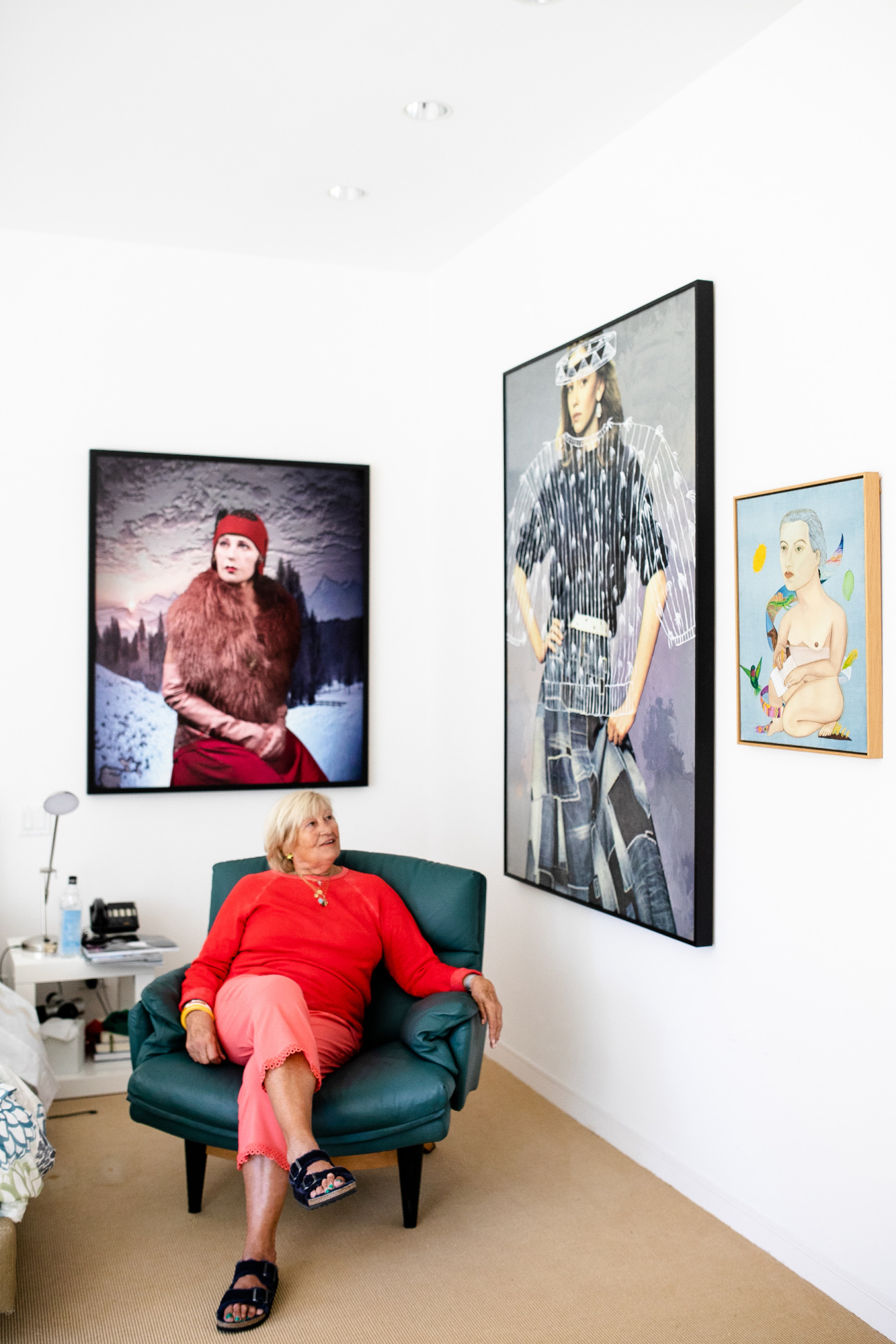
CULTURED: In your eyes, what makes the Hamptons art scene distinct from others?
Neda Young: I think it’s because there are so many artists here. I don’t think it’s about collectors. Artists love the Hamptons. The light is beautiful here, and somehow, you know, two hours from a major metropolis, you really have nature. You have beautiful trees. My property gets ducks, geese, deer, and wild turkeys. But I also think that for artists there is so much space for larger studios, and the art institutions here are also very supportive.
CULTURED: Where does the story of your collection begin?
Young: I studied art history, and I think being European—I’m Croatian—you grow up with art, especially figurative art. In the churches we have the Tintorettos; in the street there are sculptures. It’s just something that’s part of your life. And then when I came to the States, probably 50 years ago, in ’72, I had no money. I was divorced, but I bought a Joan Snyder for $600. So things like that, it started a long time ago for me.
CULTURED: And was that the first piece you purchased?
Young: Maybe not the first, but I bought Käthe Kollwitz early on. I went to visit a friend in Boston who had a gallery, and she had these artists, and I said, “Oh, I like this. I’d like to buy them.” And it just became an addiction, in a way. Every time I had any money, I would just buy art. Friends would go buy gorgeous leather pants—but, you know, T.J. Maxx didn’t exist then.
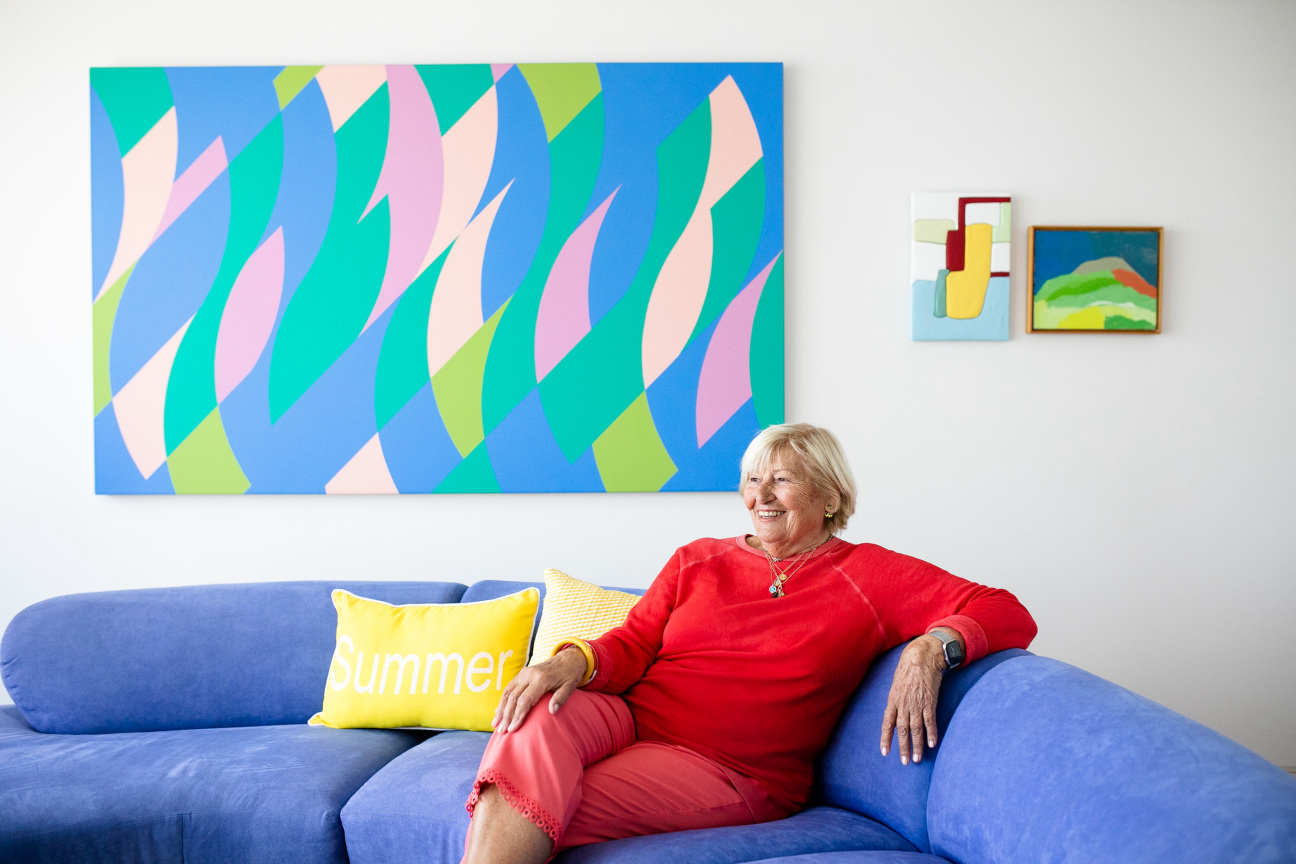
CULTURED: Are those pieces still a part of your collection today?
Young: I still have the Snyder painting. At the time that she painted it, she had just given birth, and I think she left the marriage for a female partner. I was identifying with the work because I had also just gotten divorced. I was a single mother, and I also felt like I was going through this freedom from something. For me that was quite meaningful.
CULTURED: Is your collection more heavily represented by women artists?
Young: I really think so. I was asked to have some works from my collection be a part of a show—with Beth Rudin DeWoody and Baby Jane [Holzer] and others—at the Southampton Arts Center. I was just sending them stuff, and I realized that probably more than half of my collection is women artists.
CULTURED: So maybe it was subconsciously that you were building the collection.
Young: Usually I just buy from passion and reaction. It’s a gut feeling, always. I never had an advisor or anything. It was usually just for me to connect with a piece of art. I was very lucky with the artists and galleries—we were like family. I was incredibly close with Cindy Sherman, with Metro Pictures, with Gagosian, and women-led galleries—Barbara Gladstone, Marian Goodman. So I really think I was on the inside. I would always be in the back room someplace when something came in. I was lucky, I think.
CULTURED: I'm sure it was more than luck.
Young: I always give credit to a higher power. I don't know.
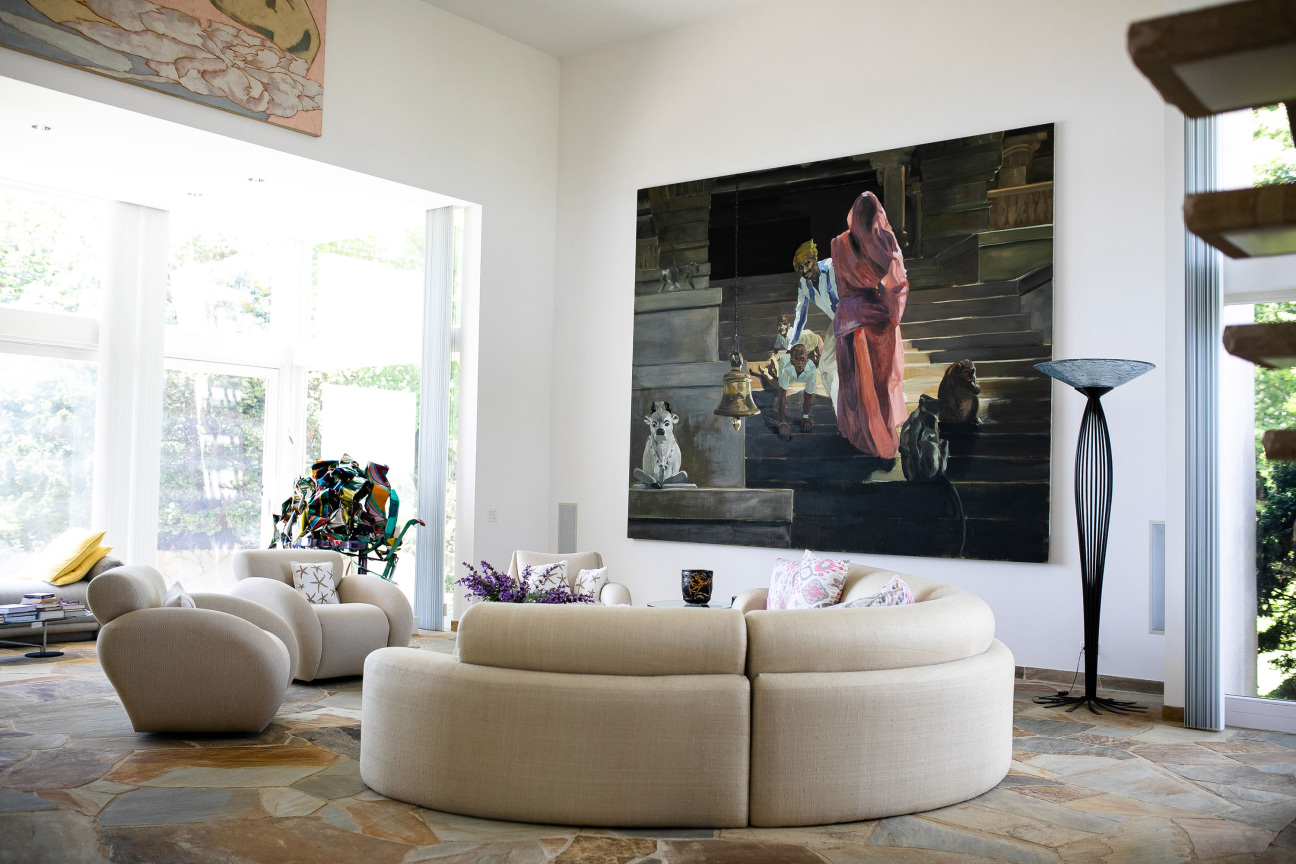
CULTURED: And what about when people come to visit you? Is there a particular work that stirs up the most conversation or that people are drawn to?
Young: People love Eric Fischl’s painting, one of his "India" paintings, which is major in my home. Everybody reacts strongly to that one. I have so many great works, though. I have very important [Julian] Schnabels—huge works—also Ed Ruscha, David Salle, Alex Katz.
CULTURED: And how about some more of the women artists you’ve collected over the years?
Young: Oh, yes, off the top of my head: Agnes Martin, Cindy Sherman, Barbara Kruger, Kara Walker, Elizabeth Peyton, Ghada Amer, Tracey Emin, Shirin Neshat, Cecily Brown, Nan Goldin…
CULTURED: How do you discover new artists?
Young: I really don’t discover artists. The galleries discover artists. I think that’s their job. And if they show it to me, I will choose. I have access to a lot of galleries, so I get stuff all the time, and then I look at it. I’m very curious, so I do have younger artists in the collection, too.
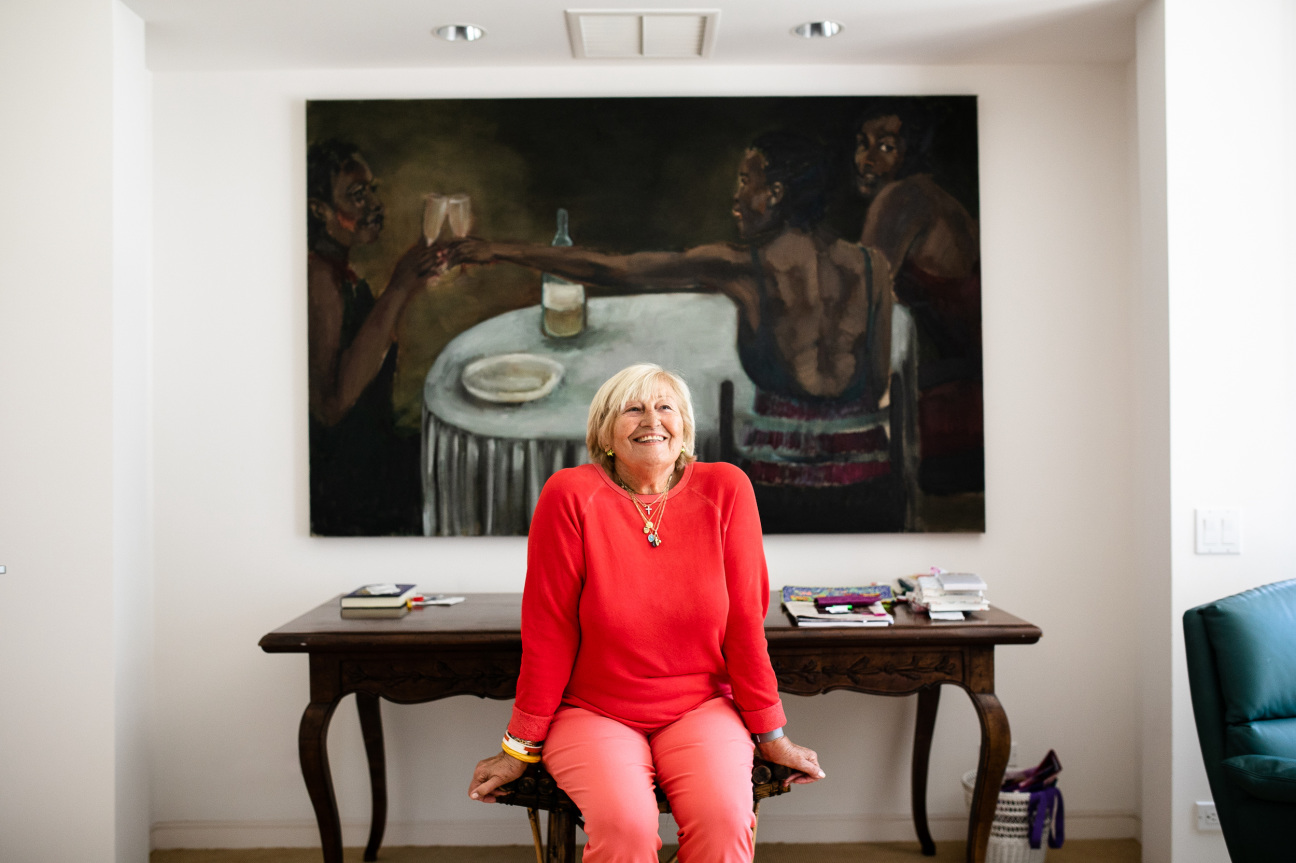
CULTURED: That’s a very important part of life, to be curious.
Young: Yeah, for me it’s very important. Each artist is like a part of my life. It’s like my biography. Every artwork was acquired within a situation, at a moment in my life. Honestly, my art is like my life story. Now when I look at a different work, it brings back that time in my life. I have a picture in my head of me, the artist, the conversation. It becomes sentimental.
CULTURED: That’s very powerful.
Young: But that’s how it feels for me. I had access because of my relationships with a lot of artists. I don’t even think I had money sometimes, but I just managed.
CULTURED: And how about the moments when the work got away?
Young: There are many pieces that got away. A Louise Bourgeois "Spider." I bought a smaller one. I have a few wonderful pieces of Louise Bourgeois’s, but that one I just couldn’t afford. There are a few pieces that today I go like, “Wow.” But I think I did well, so I have no regrets.
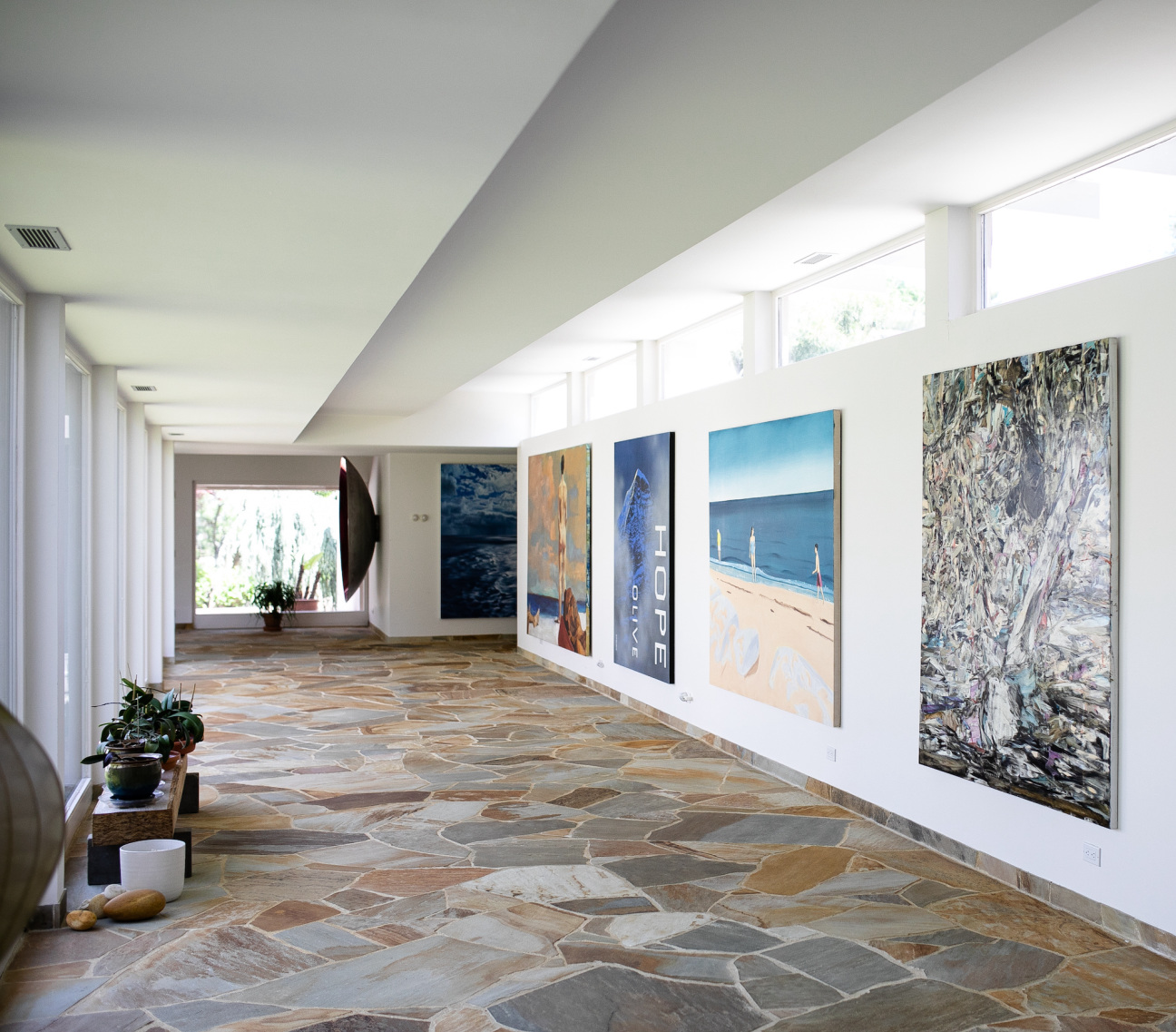
CULTURED: What’s your art fair approach? Do you still enjoy them?
Young: I think the fairs are okay. I usually go because I see all my friends from all over the world. So for me, art fairs are about socializing more than buying art. All the art is sent to you before the fair anyway.
CULTURED: And what would you tell young collectors getting their start?
Young: Buy with your heart. First you have a feeling, and all three things, you know, the feeling, the eyes, the mind. You have to have some knowledge, but it always comes from the stomach and the heart for me.
CULTURED: Do you think of yourself as a collector?
Young: My friends are artists, and they say, “I don’t think of you as a collector.” And I really don’t either. I don’t take myself too seriously. I do what I like. I’m honest and direct. You have to be true to yourself and just do the right thing in life.










 in your life?
in your life?

